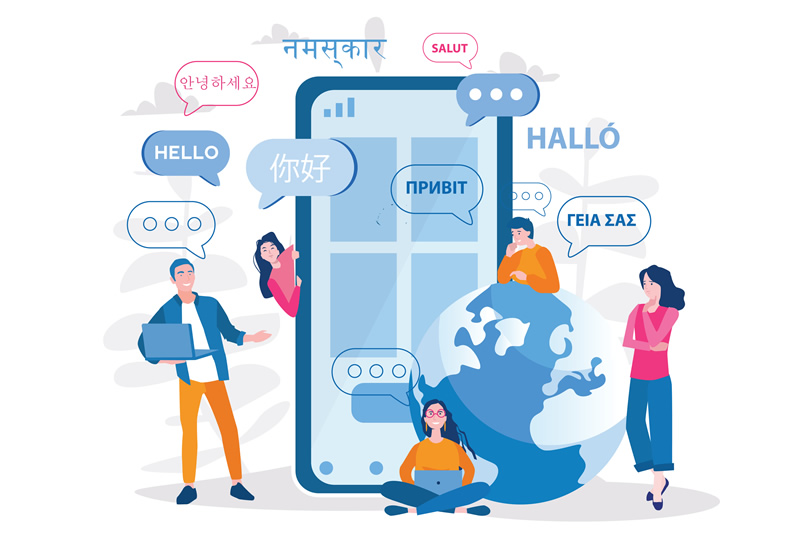As the globalization of business at all levels increases, effective communication across language barriers in the virtual environment is an increasingly vital concern for businesses and organizations. The COVID-19 pandemic reshaped the way we work and connect. Zoom, Microsoft Teams, and other platforms became essential tools for virtual meetings and events. For many, this also entailed dealing with the challenges of language diversity, making the role of interpreters more vital than ever. To help you make the most of Zoom interpretations, we’ve compiled a set of best practices for both interpreters and clients.
Plan Ahead
Before scheduling a Zoom interpretation, it’s essential to plan. Define the languages you need, select interpreters with expertise in your field, and ensure they have the necessary technology and tools for the job. A well-prepared interpreter will ensure smooth communication during your virtual meeting.
Use Professional Interpreters
Quality matters when it comes to interpretation. Always opt for professional interpreters who are experienced in remote interpreting and well-versed in your specific industry or subject matter. They should be familiar with the Zoom platform and any specialized terminology relevant to your meeting.
Test Technology and Connection
As we all have seen, technical glitches can disrupt even the best-planned Zoom interpretation. Prior to the meeting, test your internet connection, audio equipment, and the Zoom platform itself. Ensure that interpreters also have a stable internet connection and access to any necessary software or platforms for real-time terminology research.
Share Materials in Advance
If you have presentation slides, documents, or any written materials that will be discussed during the meeting, share them with interpreters ahead of time. This allows interpreters to prepare and familiarize themselves with the content, ensuring accurate and contextually relevant interpretations.
Set Up Channels or Rooms
Zoom allows you to create separate channels or rooms for interpretation. This feature is invaluable, especially in large virtual events with multiple languages. Assign interpreters to specific rooms and instruct participants to join the appropriate channel for their language. This prevents crosstalk and confusion.
Enable Interpretation Mode
Zoom offers an interpretation feature that allows interpreters to provide real-time interpretation. Ensure that this mode is enabled and configured correctly in your meeting settings. Interpreters can then select the appropriate language channel, and participants can choose their preferred language.
Clarify Interpreter Roles
Clearly define the roles of interpreters in your meeting. Are they providing simultaneous interpretation, consecutive interpretation, or a mix of both? Make sure participants understand how to utilize interpretation services, such as muting the original audio and listening to the interpreter’s channel.
Encourage Interaction
Interpreters play a pivotal role in facilitating communication, but they should not be invisible. Encourage participants to interact with interpreters if they have questions or need clarification. This helps maintain engagement and ensures a successful meeting.
Provide Breaks
Interpreting can be mentally taxing, so it’s important to schedule regular breaks for interpreters. This ensures they remain focused and can provide high-quality interpretations throughout the meeting.
Seek Feedback
After the meeting, solicit feedback from both interpreters and participants. This allows you to assess the effectiveness of the interpretation services and make improvements for future Zoom interpretations.
Zoom interpretations have become an essential tool for overcoming language barriers in the virtual world. By following these best practices, you can ensure that your Zoom meetings are inclusive, efficient, and effective. Whether you’re conducting international business, hosting virtual events, or connecting with a diverse audience, professional interpretation services on Zoom can help bridge the language gap and foster meaningful communication.
TrueLanguage and our Partner Powerling can answer any questions you may have about this burgeoning area of online communication, and are ready to assist in your next Zoom or other online remote interpretation.


